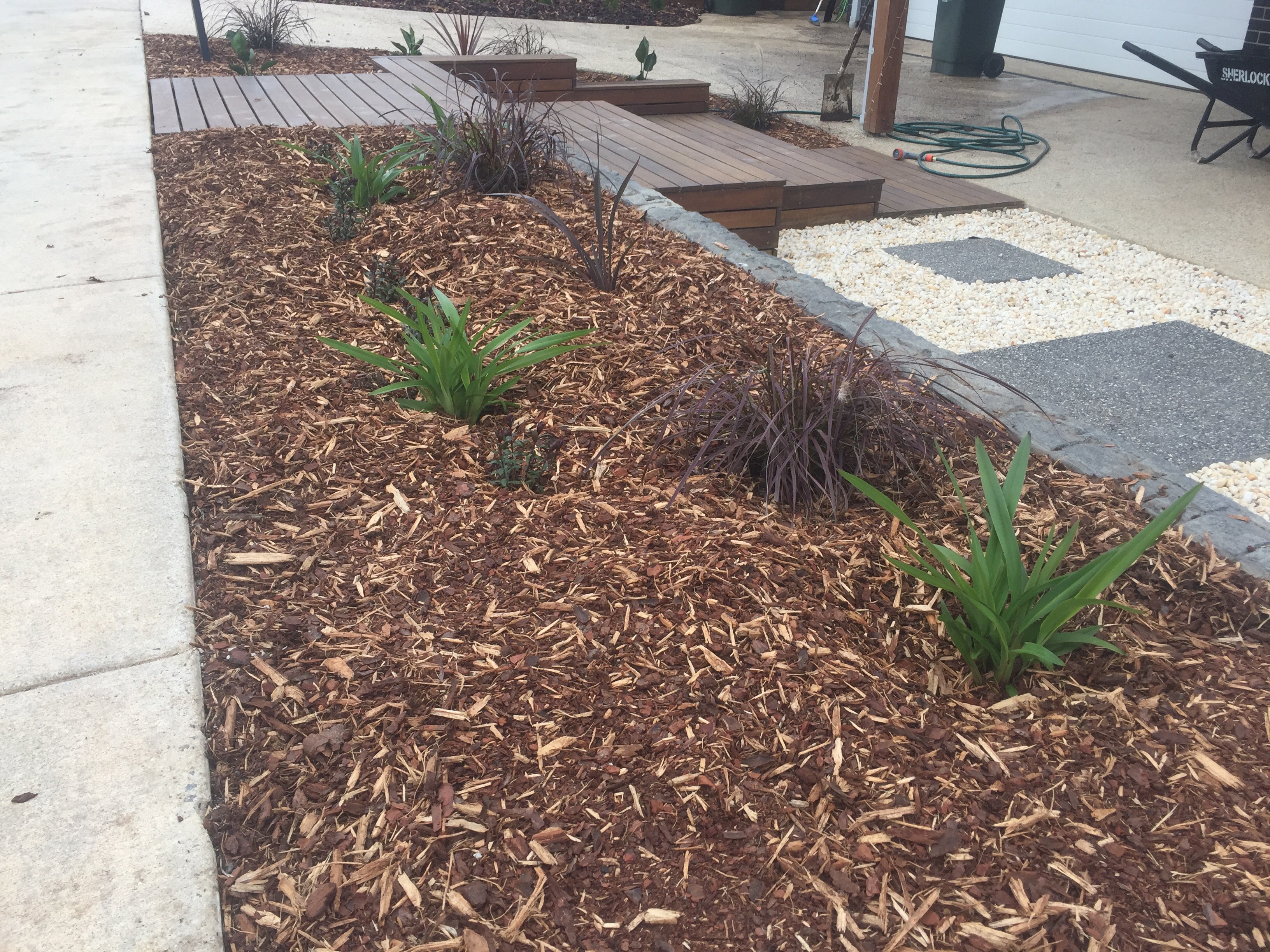Around mid last year I was required to plan and create a garden design for my horticulture course. The garden had to be real and measurements had to be sketched up. I chose my neighbour’s front yard after being told they were looking for someone to do their garden. It was previously full of stones and dying plants. Bland and unappealing.
This is the first time I had done any sort of landscaping on my own. My cert 3 gave us around 6 weeks of it to learn the basics, but it was all guided.

All these plants died eventually 😦
The clients needs were such:
-no flowers
-must not die
-something to block out the neighbours
-semi tropical looking
So with that in mind I picked out (with the help of my teacher), my neighbour’s garden.

My original plan was this. In the end a few were replaced with something different, and the Dianella’s at the front were reduced to just a few. Because of the light frosts we get, I didn’t want to risk planting something and losing it to the frosts. The Cordyline ‘Ruby’ I intended to plant was replaced with a Phormium, and the row of Dianella’s on the right hand side bed was changed to some purple Hebe’s I had lying around, so I didn’t have to pay for those. Though I do regularly see palms planted, they don’t thrive as well as they could, so I was advised to stay away.

Thuja ‘Smaragd’ looking dapper. The client over ordered mulch and compost, which I got to keep for free!

Middle garden bed.
-Cordyline ‘Australis’
-Strelitzia reginae
-Pennisetum advena ‘Rubra’

This garden bed was a little rushed (compared to the Thuja bed, where I took my time and made sure all were lining up and straight) but will fill out fine.

Complete!
So far they have only been watered on days that reach over 30 degrees, and other than missing one day (with the fountain grass copping it the most), all plants are doing fine. The Dianella tasmanica ‘Tas Red’, is one of the hardiest and amazing plants in there. I had one left over which I kept, and even being in a broken plastic pot with exposed roots hasn’t done a thing to it. It’s just as lush and green as when I first purchased it!
Things that could’ve been done differently:
-More frequent watering, or planting later in the season
-More mulch. It looked like enough at the time, but once it all settles I have come across bare patches that need to be covered. Maybe the size of the mulch is important too? The Thuja bed contained large bark pieces (and filled out just fine), whereas the other two had smaller pieces (client ordered two different lots)